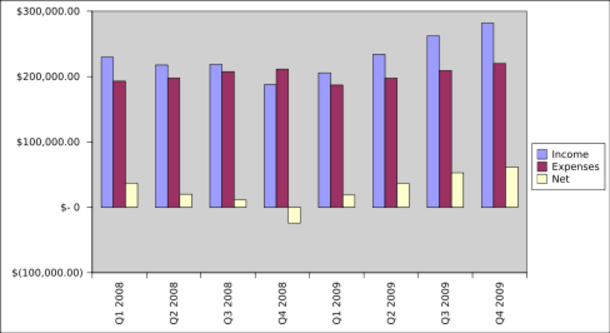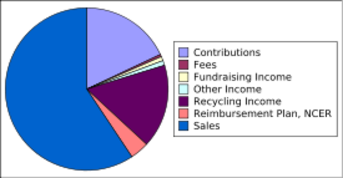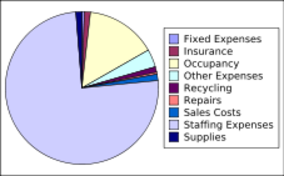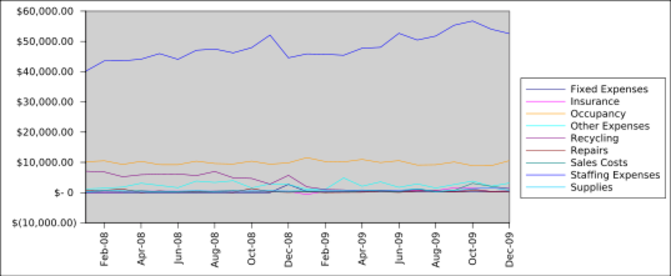Report to the Board Q4 2009
Financial Trends 2008 and 2009
| Q1 2008 | Q2 2008 | Q3 2008 | Q4 2008 | Q1 2009 | Q2 2009 | Q3 2009 | Q4 2009 | |
| Income | $229,744.99 | $217,708.27 | $218,767.35 | $187,418.39 | $205,752.82 | $233,876.62 | $262,149.86 | $281,813.02 |
| Expenses | $192,906.49 | $197,644.73 | $207,570.77 | $211,437.01 | $187,025.35 | $197,683.52 | $209,334.00 | $219,874.84 |
| Net | $ 36,838.50 | $ 20,063.54 | $ 11,196.58 | $ (24,018.62) | $ 18,727.47 | $ 36,193.10 | $ 52,815.86 | $ 61,938.18 |
The above table shows and chart shows the years 2008 and 2009, quarter by quarter, with income and expenses compared. Except for Q4 2008 income exceeded expenses and the net income has been growing since. The problem with Q4 were severalfold, including a snow storm that shut us down for much of December, the collapse of the commodities market which cut into recycling income, and the general financial meltdown which diminished monetary contributions.
These income and expense pie charts help to understand where the money comes from and goes in general. The data is based on monthly averages for the 2008-2009 years (so far).
The above chart shows Free Geek's Income, month by month, over the period of 2008 and 2009 (so far). This chart excludes one time income since its purpose is to show the overall trends. You can see that the largest income stream is Sales with Donations and Recycling coming in about tied for second place.
The above chart shows Free Geek's Income, month by month, over the period of 2008 and 2009 (so far). This chart excludes one time expenses since its purpose is to show the overall trends. You can see that Staffing expenses are the largest expense by far. Occupancy expenses are next, about a quarter of staffing.




